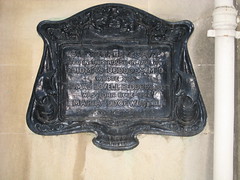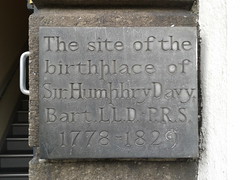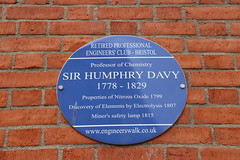Sir Dr Humphry Davy PRS MRIA FGS 1st Baronet LLD


Sir Dr Humphry Davy PRS MRIA FGS 1st Baronet LLD
(1778-1829)
chemist, inventor, Fellow of the Geological Society, Member of the Royal Irish Academy, Doctor of Law, Knight Bachelor (from 1812), 1st Baronet Davy of Grosvenor Street (from 1819), and 23rd President of the Royal Society (1820-1827)
Commemorated on 3 plaques
Sir Humphry Davy lived in this house in 1798 with Thomas Beddoes. M.D. whose son Thomas Lovell Beddoes. poet was born here 1803 Maria Edgeworth his aunt visited here
3 Rodney Place, Bristol, United Kingdom where they lived
The site of the birthplace of Sir Humphry Davy Bart LLD PRS 1778-1829
4 Market Jew Street, Penzance, United Kingdom where they was born (1778)
Professor of Chemistry Sir Humphry Davy 1778-1829. Properties of Nitrous Oxide 1799. Discovery of Elements by Electrolysis 1807. Miner's safety lamp 1815.
Anchor Road, Bristol, United Kingdom where they lived near



